The EtOH medical abbreviation stands for ethanol or ethyl alcohol, a chemical substance with many applications. It’s antibacterial, used in medicine to stem infection or to dissolve compounds as part of cough remedies. It is around the house in hand sanitizers, wipes and fuels vehicles worldwide.
Most famously, EtOH is in alcoholic beverages and is responsible for their intoxicating effects. Whenever someone feels drunk, that’s ethanol working on their nervous system. Excessive and prolonged use of EtOH can lead to serious health consequences and alcohol use disorder (AUD). AUD is the most common type of addiction in the United States, responsible for destroying lives and tearing apart families. It can completely overwhelm the individual to the point where they cannot function, and in many cases, it can kill them.
At GateHouse Treatment, it’s our mission to ensure everyone can live a healthy and fulfilling life free from addiction. In this article, we will get to the root of the problem and explore the nature of ethanol, its sources, methods of ingestion, its abuse, and the potential dangers associated.
1. What is Ethanol Alcohol (EtOH)?
EtOH is a chemical compound produced by yeast or bacteria fermentation of sugars. It is the primary psychoactive substance in alcoholic beverages such as beer, wine, and spirits. Ethanol acts as a central nervous system depressant, slowing down brain activity. EtOH is why inebriated individuals have lower inhibitions, less coordination, higher pain thresholds, slurred speech, and delayed reaction times.
2. Where is EtOH Found?
Ethanol alcohol is commonly found in a wide range of alcoholic beverages, including:
- Beer: Produced through the fermentation of cereal grains, such as barley, hops, wheat, or corn, beer generally has a lower alcohol content (usually between 4% and 8% alcohol by volume, or ABV).
- Wine: Made from fermented grapes or other fruits, wine typically has an ABV ranging from 8% to 15%. However, fortified wines like sherry or port can have higher alcohol content.
- Spirits: Also known as hard liquor or distilled spirits, these beverages go through distillation processes that concentrate the alcohol content. Examples include vodka, rum, whiskey, gin, and tequila, which generally have ABV levels ranging from 35% to 50% or higher.
- Everclear: This is a highly potent form of ethanol alcohol that is commercially available. It is known for its high alcohol content, typically 75% to 95% ABV. Due to its strength, Everclear is a frequent base for homemade infusions and cocktails. However, it is essential to note that its extreme potency can pose significant risks if consumed irresponsibly or in excessive quantities.
- Rubbing alcohol: Rubbing alcohol, also known as isopropyl alcohol, is another form of ethanol alcohol primarily used for external application. It typically contains around 70% to 90% alcohol content. It is found in household products or as a standalone bottle for disinfectant and antiseptic purposes. Although not intended for consumption, it is sometimes abused and extremely dangerous.
3. Methods of Ethanol Alcohol Ingestion
Ethanol alcohol can be consumed in various ways, including:
- Oral ingestion: The most common method is drinking alcoholic beverages, where ethanol is absorbed through the gastrointestinal tract and enters the bloodstream.
- Inhalation: Ethanol can also be inhaled as a vapor or aerosol, bypassing initial metabolism and having direct access to the brain. This method is less common and typically associated with experimental or high-risk behavior.
4. Blood Alcohol Concentration (BAC) Levels
Blood Alcohol Concentration (BAC) is a measure of the amount of alcohol present in a person’s bloodstream and is used to estimate the degree of intoxication and impairment. BAC is affected by several factors, including the rate of alcohol consumption, body weight, metabolism, and tolerance levels. The legal BAC limits for driving and the associated levels of impairment vary by jurisdiction.
As a general guideline, the authorities commonly associate the following BAC levels with specific effects:
BAC of 0.02% to 0.05%: This range typically produces mild relaxation, slight impairment of judgment, and a sense of euphoria.
BAC of 0.05% to 0.08%: At this level, most individuals experience reduced coordination, decreased attention span, impaired judgment, and a decline in fine motor skills. In many jurisdictions, driving with a BAC exceeding 0.08% is illegal.
BAC of 0.08% to 0.15%: Higher BAC levels intensify the previous effects, leading to pronounced impairment of physical and cognitive abilities. It significantly impairs reaction time, vision, hearing, and speech. Memory loss and blackouts can occur within this range, where individuals may have no recollection of events that transpired during the intoxicated state.
BAC of 0.15% to 0.30%: Individuals experience severe intoxication and an increased risk of harmful consequences at these levels. The body becomes difficult to manage, and individuals may have difficulty standing, walking, or even maintaining consciousness. Nausea, vomiting, and dizziness become more prevalent as the body struggles to process the high alcohol concentration. Blackout episodes and impaired decision-making are common, increasing the risk of engaging in dangerous or life-threatening situations.
BAC above 0.30%: These levels are a critical danger zone, as the central nervous system experiences severe depression. Breathing and heart rates may decrease, posing significant risks to vital functions. Loss of consciousness, alcohol poisoning, and respiratory failure are possible outcomes. It’s important to note that BAC levels exceeding 0.40% can be life-threatening and potentially result in coma or death.
5. The Dangers of EtOH Abuse
- Physical health risks: Long-term excessive alcohol consumption carries immense health risks. It can lead to various physical health problems, including liver disease (such as cirrhosis), cardiovascular complications, pancreatitis, gastrointestinal issues, a weakened immune system, and an increased risk of certain types of cancer.
- Mental health implications: Ethanol alcohol abuse contributes to or is simultaneous with mental health conditions. These disorders include depression, anxiety, among others. Alcohol can also exacerbate existing mental health issues.
- Impaired judgment and risky behavior: Intoxication from ethanol alcohol can impair decision-making abilities, leading to engaging in risky behaviors such as driving under the influence, unprotected sex, violence, and accidental injuries.
- Addiction and alcohol use disorder: Regular and excessive alcohol consumption can lead to alcohol use disorder, a chronic medical condition characterized by an inability to control or stop drinking despite adverse consequences. AUD can have a devastating impact on personal relationships, work, finances, and overall well-being.
- Treatment for EtOH Abuse
Since alcohol use is normalized and often encouraged in our society, those with alcohol use disorder can sometimes feel trapped by this problem. With out-of-control drinking, individuals may feel shame about seeking professional help and fall further into addiction. There are many ways to break this cycle. Alcoholism treatment is effective and has years of study backing its efficacy. Treatment options may include:
- Detoxification: Medically supervised detoxification helps individuals safely manage withdrawal symptoms during the initial stages of recovery.
- Outpatient programs: This method offers flexibility for individuals who do not require round-the-clock care. Outpatient treatment involves regular counseling sessions, group therapy, and support to help individuals maintain sobriety while still attending to their daily responsibilities.
- Medication-Assisted Treatment (MAT): MAT combines behavioral therapy and using FDA-approved medications to support individuals in their recovery journey. Medications like Vivitrol can help reduce cravings, manage withdrawal symptoms, and deter relapse. They support sobriety efforts and work alongside other conventional treatments.
- Cognitive-Behavioral Therapy (CBT): CBT is a widely recognized and effective therapy for treating alcohol use disorder. It focuses on identifying and modifying unhealthy thinking patterns and behaviors related to alcohol abuse. CBT helps individuals develop coping strategies, enhance self-control, and develop healthier decision-making skills. It also addresses underlying emotional issues that may contribute to alcohol misuse.
- Support groups: Participation in groups such as Alcoholics Anonymous (AA) can provide ongoing support and a sense of community to individuals in recovery. In addition to alumni programs after recovery, they remain a backbone of sobriety.
GateHouse Treatment and EtOH treatment
No matter what your challenges are, you are not alone. GateHouse Treatment offers top-of-the-line outpatient, intensive outpatient, and partial hospitalization programs to support you during every recovery step. We also partner with quality sober homes to give you a relaxing, stress-free environment to focus on wellness.
Call us at (855) 448-3588 for a free consultation or reach out on our website and take steps toward a fulfilling, addiction-free life.
- Cymbalta Withdrawal: Causes, Symptoms, And Management - October 12, 2023
- Boredom in Recovery: 5 Tips to Avoid Relapse - October 6, 2023
- Overconfidence and Rehab: Avoiding Relapse - October 4, 2023




